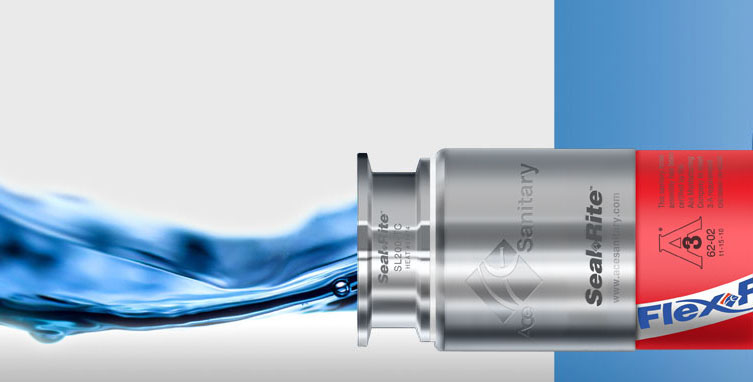The acronym “STAMPED” will help guide you along your journey of trying to select the proper hose and/or fittings. If a hose is not used in the proper fashion, serious injury and/or damage can occur.
Later in the article we will outline “STAMPED” and how to properly use it when selecting your next hose.
Let’s face it…When it comes to pharmaceutical process applications, the majority have sanitary hose assemblies somewhere in their systems.
Most pharmaceutical sanitary hose assemblies need to have product contact materials that have been tested to meet USP Class VI requirements and they also need to be steam sterilizable or autoclavable.
At Acuity Process Solutions, we deal with a lot of different products every single day. Many of these products meet FDA guidelines, but sometimes meeting FDA guidelines isn’t quite enough. Occasionally there are specific pharmaceutical requirements that must be followed, and in this article we will talk about two of our products that meet them: Platinum cured silicone and Smooth Bore PTFE (Teflon). Let’s take a look at both of these materials to demonstrate exactly how they are applied, so you can see what we take into consideration when choosing the right sanitary hose for your specific application.
PTFE Hose Properties
- Great chemical resistance
- Very flexible
- Normally not gas permeable
- Sizes ½” -3” (there are 4” smooth ID PTFE hoses available but they really don’t bend)
- Smooth inner bore and a convoluted outer bore. Typically they have a stainless steel braid reinforcement then a cover material such as EPDM or Silicone, making them heavier than silicone
- Compared to Silicone it has higher pressure ratings
Platinum Cured Silicone Properties
- 4 ply hose is available from ½”-4”, normally with a wire helix. Mandrel wrapped, cloth reinforced
- Somewhat gas permeable
- Does not do well with many solvents
- Unable to withstand high pressure
- Sizes range from ¼” to 4”
- Lightweight
- Also very flexible
- Braided material is able to stretch a bit
- Good chemical resistance
It All Comes Down to Your Specific Application
For example:
If you get into applications above 100 PSI, the PTFE hoses are probably preferred. If you need something light and flexible then silicone is the way to go, but if you’re looking for something in the realm of constant steam applications we typically will recommend you go with conductive PTFE hoses.
Although they will be heavier, PTFE hoses are going to be the better option If you’re looking for a hose assembly that is constantly being connected/disconnected. Keep in mind that if you’re thinking about going with wire reinforced silicone hoses or a hose that you know is in a constant dynamic state, the wire work hardens and eventually snaps so it is not the best option.
Acuity Process Solutions practices the STAMPED model. As long as you follow this procedure you should have no problems choosing your sanitary hoses in the future.
S – Size:
- What is the required inside diameter (ID) of the hose?
- Is the outside diameter (OD) critical?
- How long of a length is required?
- Is the exact overall length (OAL) including fittings critical?
T – Temperature:
- What is the temperature of the product being conveyed?
- What temperatures will the external cover be subject to?
A – Application:
- How will this hose be used?
- How will it be handled or installed?
- Will the hose be subject to any flexing, dragging, oils/chemicals, etc?
- If the hose is replacing an old hose, what is the reason for replacement?
- How has it performed?
- Does the hose have to be statically conductive or meet any regulations such as FDA, ULC, US Coast Guard, etc?
- Is it a critical, permanent application? In order to determine if the hose is “critical”, what will happen if the hose fails?
M – Material:
- What is the substance or material being conveyed through the hose?
- If it is critical, identify the concentration (%).
- If it is a material, is it wet or dry?
- What size are the particles?
- Are they sharp or abrasive?
P – Pressure:
- Determine if it is a pressure and/or vacuum application
- What is the maximum working pressure?
- Are there any pressure surges?
E – Ends:
- What type of end is required to connect the hose to the system?
- Given all the above information, what type of fitting and clamping system should be used?
D – Delivery:
- When is the hose required by?
- How much time is required to manufacture the hose and/or properly install and assemble the ends?
- Does the hose have to be tested and certified?



Leave a Reply
You must be logged in to post a comment.